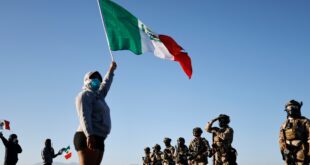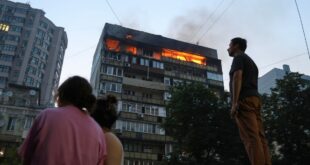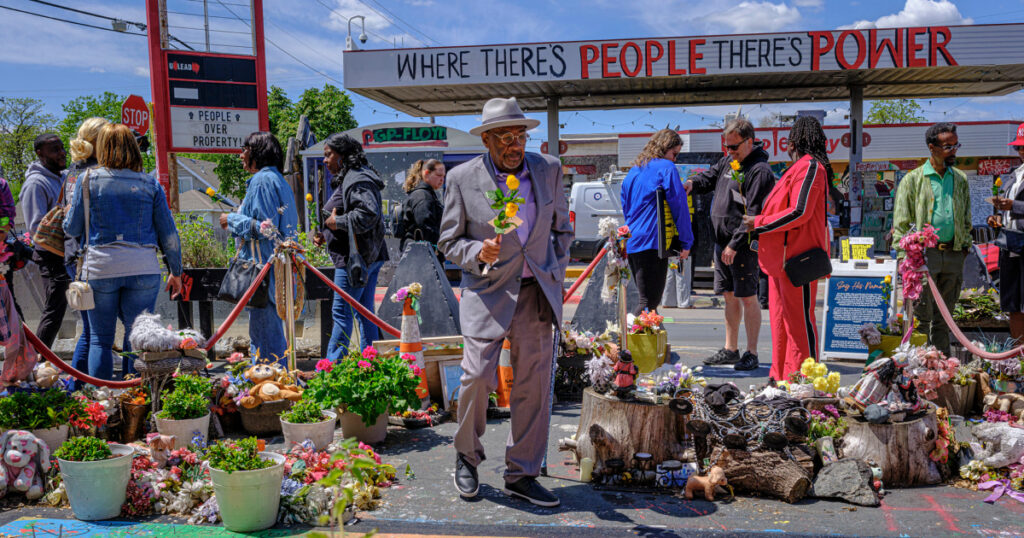
MINNEAPOLIS — On Sunday, five years since the day George Floyd was killed, the Minneapolis square named for him was overflowing.
Hundreds gathered, as they have throughout recent days, with tears and renewed calls for justice for the man who died under a police officer’s knee while a crowd pleaded for him to stop.
Visitors on Sunday dropped colorful flowers — including many yellow roses — on the intersection where Floyd was murdered, decorating a memorial enshrining him on the city’s streets.
“The feeling that we have from previous ‘angelversaries’ is very different this year,” said Bridgette Stewart, a freelance journalist and community activist who lives in Minneapolis.
Stewart said her workplace is in George Floyd Square, so she is there “every day.” Five years on, a sense of calm has returned to the community, Stewart said, and people have started to come together.
“This is our first year, actually, where we haven’t had to have Homeland Security come in and do the whole bomb sweeping,” she noted.
Ximena Rayo, a 58-year-old school principal in the city, said she doesn’t live far from where Floyd was killed. She recalled the entire city being moved by the murder.
While “we’re nowhere where we need to be,” Rayo said, there are signs of progress. Namely she said, new people have been hired and the city’s mayor and police department are “really working on better ways.”
“It looks like people feel safe,” Rayo said.
The 5th annual “Rise & Remember Festival,” which its organizers say honors Floyd and others “lost unjustly to the pervasive impacts of systemic racism,” kicked off on Friday. On Saturday, bundles of colorful flowers marked Floyd’s memorial.
Billy Briggs, a live music photographer who lives just steps from George Floyd Square, described feeling intense anxiety leading up to the fifth anniversary of Floyd’s death, triggered by memories of that day. Briggs, who served as a caretaker of the square for a year, began photographing it as a way to cope with the trauma.
“When I watch families park in front of my house, walking over there [the square], sometimes it brings me a little bit tearful, because I know they’re going over for a hard lesson, but an important one,” Briggs said. “And I’m just glad that people are still coming and bringing their families here to teach that lesson.”
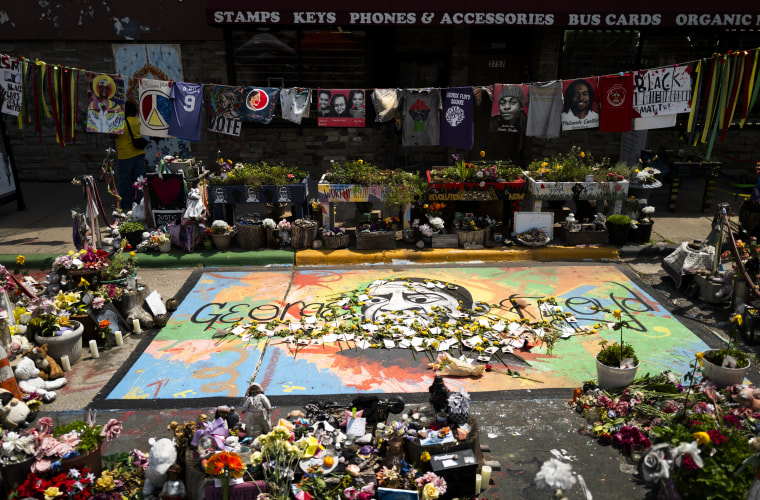
Floyd was killed on May 25, 2020, by white police officer Derek Chauvin, who used his knee to press the weight of his body on Floyd’s neck for more than nine minutes, asphyxiating him.
Floyd’s dying words were “I can’t breathe.”
Those words became a rallying cry for millions outraged by his murder, including politicians, institutions, businesses and schools. Protesters across the country took to the streets to call for change, demanding that America reckon with its deep-seated racial injustices and reform its police departments.
Chauvin was sentenced to 21 years for violating Floyd’s civil rights and 22 1/2 years for second-degree murder. Minneapolis banned police chokeholds, and companies pledged more than $66 billion for racial equity initiatives.
Floyd’s life was celebrated in other cities as well on Sunday — his family held a private memorial service in Houston and his brother hosted a march in Brooklyn, New York, that led to the unveiling of a new community plaque honoring Floyd.
Nekima Levy Armstrong, a civil rights attorney and activist, was one of the first to learn of Floyd’s death five years ago. When she watched the footage showing how he died, her heart was broken.
“I knew that I witnessed what felt like a lynching,” she said Saturday. “Tears began to stream down my face, and I was horrified by what I had seen.”
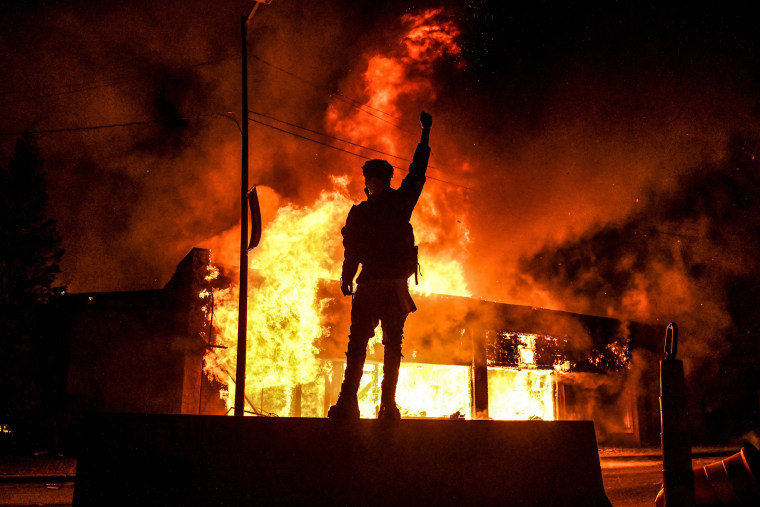
Armstrong said the conditions that led to Floyd’s death “are still in place,” adding that she had hoped “people in positions of authority would do the right thing and that they would take intentional steps to change the laws and the policies that led to the murder of George Floyd.”
“We got crumbs when we asked for a whole feast, and that’s why we’re in a standstill as a city right now,” she said.
Armstrong expressed a desire for new leadership in Minneapolis, calling for a new mayor who can take control, reform the city’s police department and appoint a new police chief.
“Why are incidents still happening to Black residents? Why are they still not getting justice? Why are they still fearful?” Armstrong asked. “That points to one person, the leader over the Minneapolis Police Department, who appointed the chief. The chief is ill-equipped and underequipped to be the chief of a police department with this history and a diverse city. He needs to go as well.”
The Minneapolis Police Department did not immediately respond to a request for comment.
City Council member Andrea Jenkins, who represents Ward 8, where Floyd was killed, described the mood at the square over the weekend as a mix of somber reflection and joyful remembrance.
“I think people are feeling mixed emotions of all of those things,” she said. “And certainly remembering George Floyd, remembering the trauma that was inflicted then, but also recommitting to that resolve of continuing the fight for justice.”
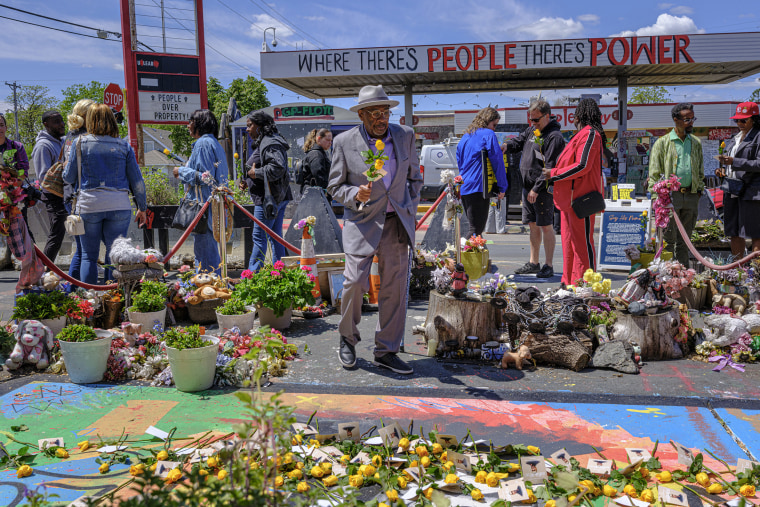
Jenkins noted several significant changes in the city since Floyd was killed, including the formation of the Office of Public Safety, which integrates the police department, the fire department and emergency management. The city also created a behavioral crisis response team to respond to anyone experiencing mental health challenges.
“For a long time, I felt like Minneapolis Police Department was on an island out there by themselves and it was their own making, but now it feels like we pulled them back into the city enterprise and hopefully making them feel more a part of the community and less of the us-against-them,” Jenkins said.
Have the policy changes been enough? “No, but I think we’re on the path to significant change,” Jenkins said, adding that the current federal government is derailing some of the change she and others are fighting for.
“Which is, I think, the story of America,” she said. “Little progress, and then we regress.”
 Latest World Breaking News Online News Portal
Latest World Breaking News Online News Portal


